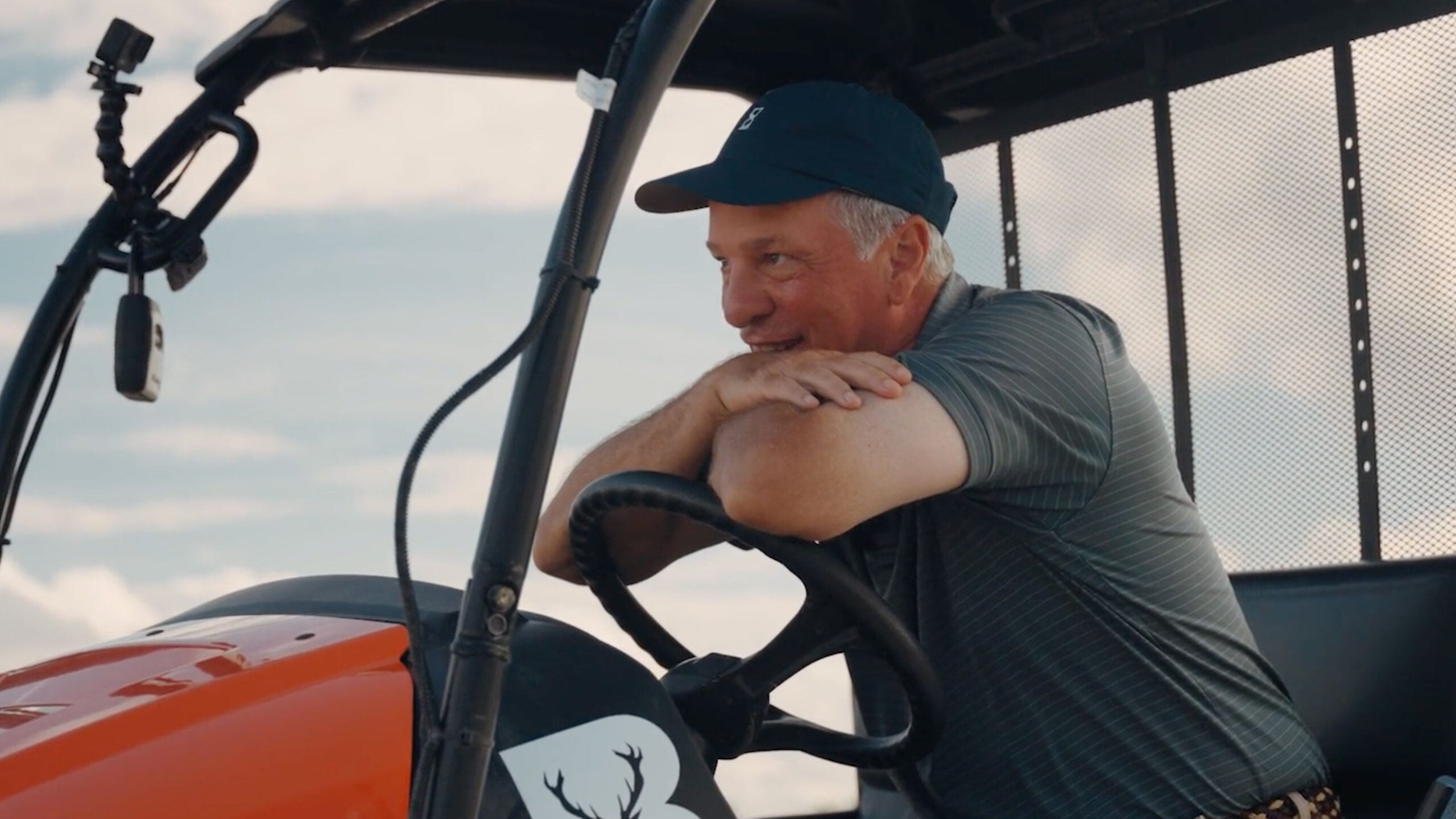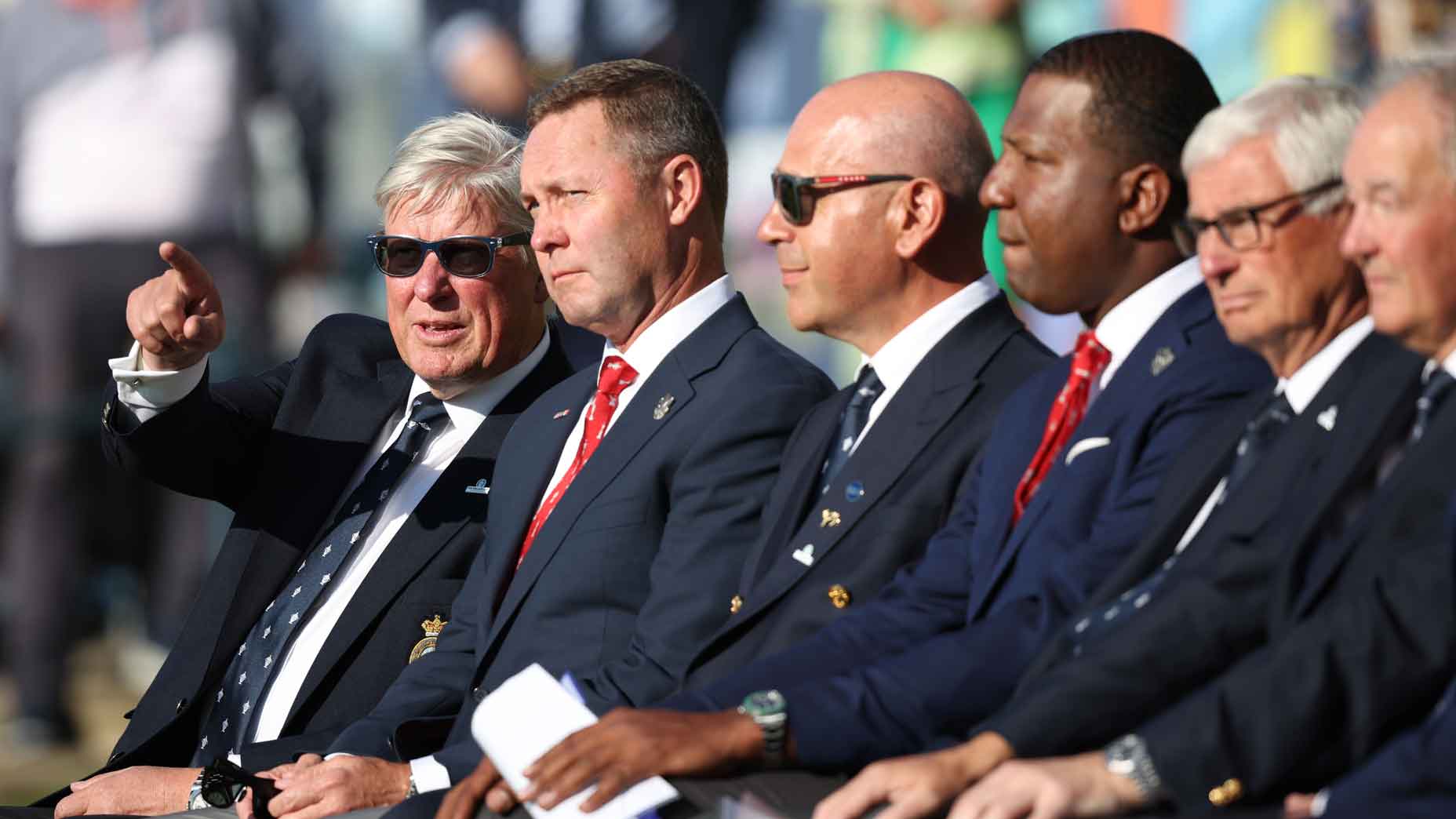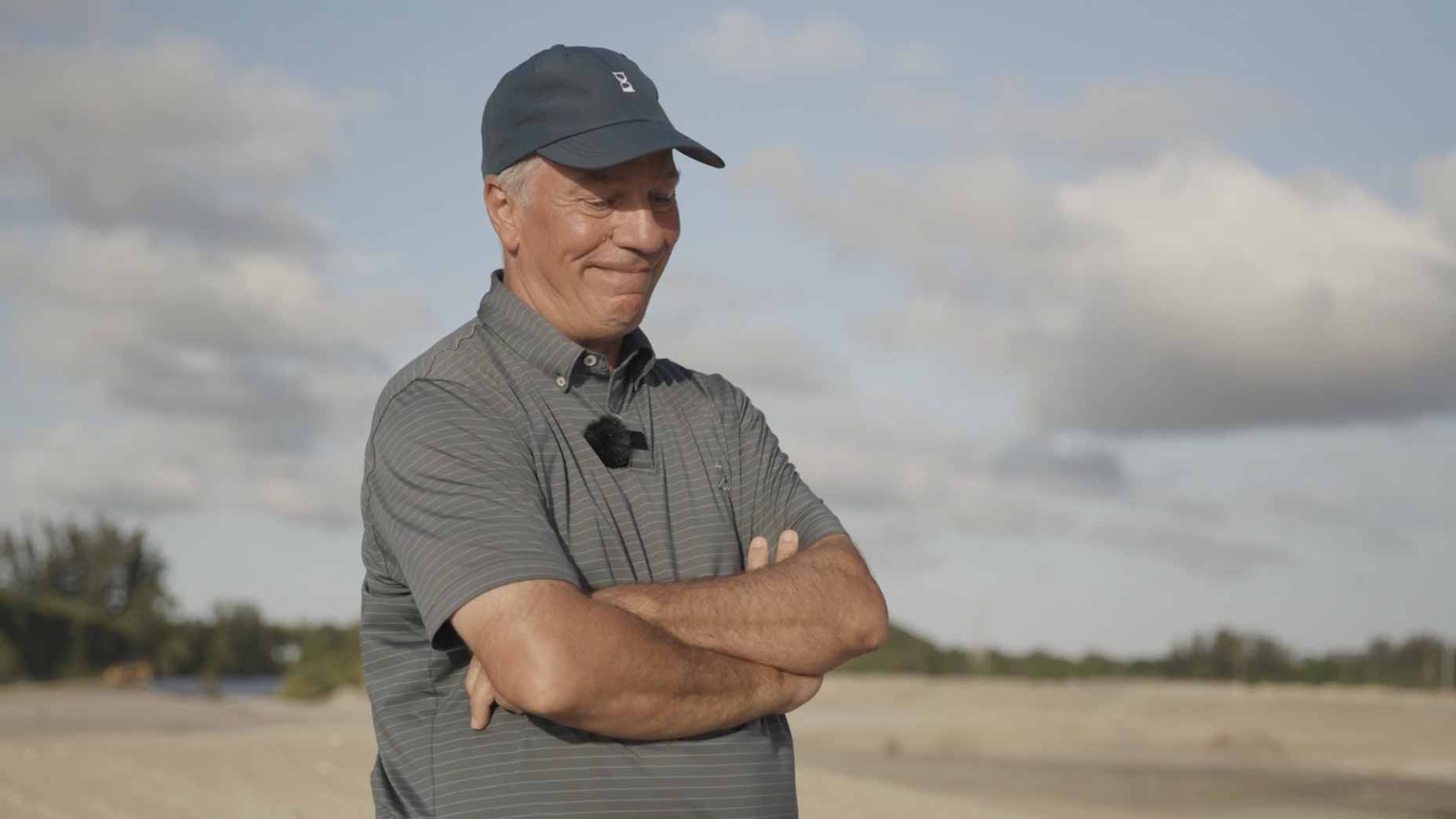You don’t hang with Tom Doak looking for party-time chit-chat about the loveliness of a certain Donald Ross tabletop green you played on a golfing holiday. Doak doesn’t do chit-chat, or cocktails parties for that matter. And while he understands the concept of vacation, it’s not his thing. A vacation for him is looking at golf courses he has not seen before. He has seen thousands.
Doak is a golf-course architect who doesn’t romanticize his profession. All good course architects are, at some level artists, just as all good hair stylists and magazine designers are. But if you really pay attention to his words — in his books, at his course openings, in the video we present here — what you realize is that he’s a builder, a soup-to-nuts builder, seeing a big picture but getting there one obsessive detail at a time.
The tools of his trade are topo maps, bulldozers, shovels, golf carts suitable for a safari, grass seed in its many varieties and an understanding of hydrology. As a golf-course architect, Doak says often and in this new GOLF Originals presentation, he claims he is overrated and that the people he works with — his “band” — are underrated. “They almost don’t need me,” he says. This Tom Doak is not an ordinary guy.

Doak is our second GOLF Originals subject in this new monthly series. Our first was the golf broadcaster David Feherty. Doak and Feherty are nothing alike. Feherty is witty, talkative, warm. Doak, in his language and manner, is almost painfully unadorned. But they are similar in a most significant way. They are both originals. Nobody can say, “Oh, I know somebody just like that Tom Doak.” Because that person does not exist.
I met Doak in the early 1990s, when he was building the first of two courses at a golf club called Stonewall, on farmland about an hour or so from downtown Philadelphia. The courses are rolling and natural, with some hilltops here and there, and play on the two Stonewall courses can be gentle and manageable from one set of tees and get-me-out-of-here difficult from another. Doak’s deputy, when he started at Stonewall, was Gil Hanse, a kid out of college then. I can still see his L.L. Bean boots as he sat on an open-air bulldozer. They were starting out. Now they are legends in their fields. Both have been go-to sources for me on questions related to course architecture ever since. Sometimes the questions get far afield. Here, Doak is asked, “Do you have any post-partem plans, and do they involve golf courses?” Doak thought, chortled and answered.
Here, Doak tells you his unvarnished opinions of Augusta National (he admires the course but there’s more to his answer), Jack Nicklaus (he admires the golfer but there’s more to his answer) and Pete Dye, Doak’s first boss. You’ll see Pete Dye in this mini-doc, for a second or two. There’s a signature on his cap. It’s telling.
Doak talks about his first trip, as a kid, to Dye’s Harbour Town Golf Links, on Hilton Head Island, and how it made him fall in love with golf-course design. He talks about working with Nicklaus at Sebonack Golf Club on Long Island. You’ll hear him talk about, and see, a work-in-progress called Sandglass, off Bridge Road in Martin County, in South Florida, on the St. Lucie Canal and a dozen or so miles from Jupiter Island. Golf-course architects are drawn to islands.
For about 40 years now Doak has been drawn to the British Isles. He worked one summer as a caddie in St. Andrews. He has read, and written about, the early architects with U.K. roots: Old Tom Morris, Donald Ross, Harry Colt, Alister MacKenzie. Their starting point was simplicity. The courses those men built are in Doak’s head from the time he wakes up until the time he goes to sleep. There are costs, to leading such an obsessive life. Doak talks about those costs here, movingly.
Fifty and 100 years from now, it’s possible that some Doak courses — Pacific Dunes in coastal Oregon and Cape Kidnappers in coastal New Zealand and Streamsong Blue in central Florida are three of his best-known courses — will continue to grow in stature. Good golf courses have long lives and are always evolving, long after the architect is dead. Dead, but not gone. As Doak says here, “I’ve left myself in some of these places.”
His fingers go up. His eyes go right. He goes silent. This is his life. The work is the work, and the work is his life.
Michael Bamberger welcomes your comments at Michael.Bamberger@Golf.com











